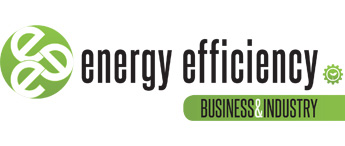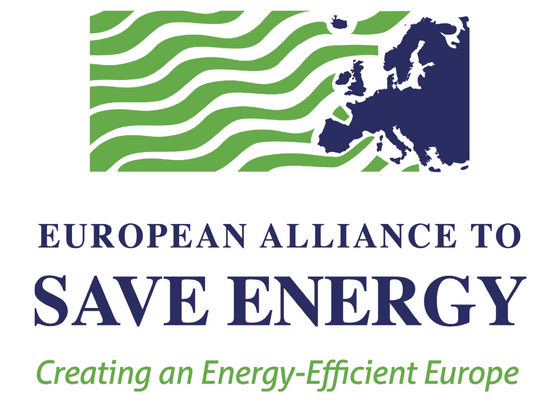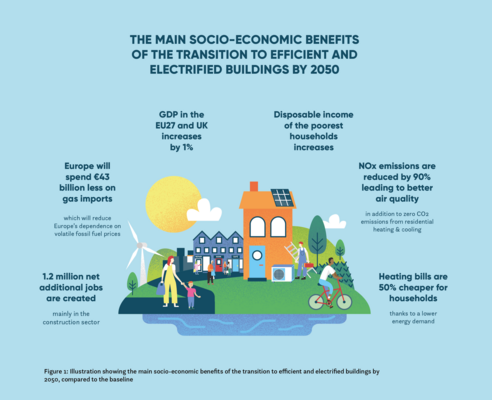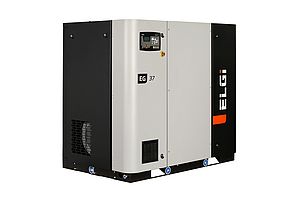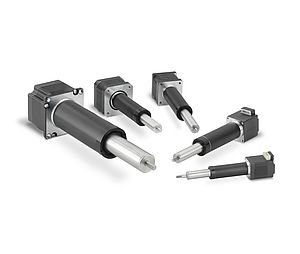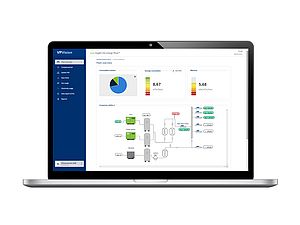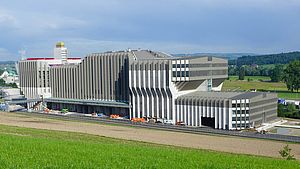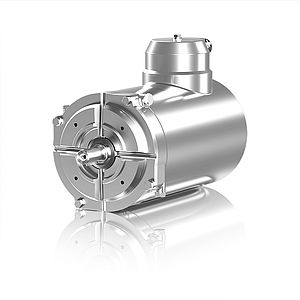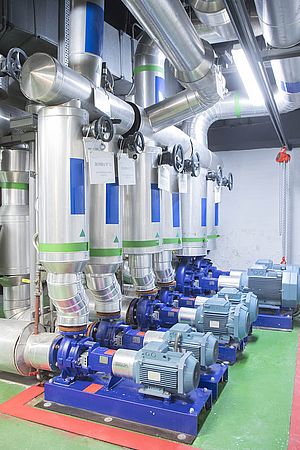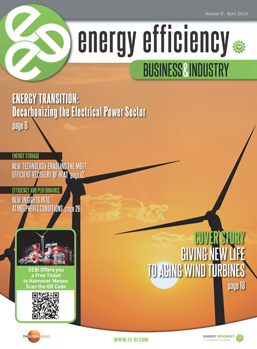On March 8th, in light of Russia's invasion of Ukraine, the European Commission has proposed a plan to make Europe independent from Russian fossil fuels well before 2030, starting with gas. This plan also outlines a series of measures to respond to rising energy prices in Europe and to replenish gas stocks for next winter. For instance, the REPowerEU plan will seek to diversify gas supplies, speed up the roll-out of renewable gases and replace gas in heating and power generation. This can reduce EU demand for Russian gas by two thirds before the end of the year.
Electrifying and renovating European buildings could help cut Russian gas imports by roughly 25% within a decade and generate benefits for the economy, according to a new study by Cambridge Econometrics.
The report “Modelling the socioeconomic impacts of zero carbon housing in Europe”, commissioned by the European Climate Foundation and project-managed by the European Alliance to Save Energy (EU-ASE), explores various scenarios for reducing fossil fuel consumption in European residential buildings to hit the EU’s climate goals1.
According to the study, Europe can dramatically reduce its need to import gas from overseas by upgrading homes, while at the same time create additional jobs and deliver socio-economic benefits for European households.
“The safest and most climate-friendly energy is the one we do not use. Each 1% of energy efficiency leads to a 2.6% reduction in gas imports. The study’s findings shows, once again, that prioritising energy efficiency renovations accelerates the integration of renewables and delivers multiple benefits, including increased Europe’s energy security, to citizens, businesses and the environment” commented Monica Frassoni, President, European Alliance to Save Energy.
By rolling out a wave of climate-friendly renovations and heat pumps in homes, Europe can save the equivalent of a quarter of current Russian gas imports by 20302. As a result, the annual spending on gas imports would go down by €15 billion within a decade and by €43 billion in 2050.
Main findings
The study shows that accelerating energy renovations and the uptake of heat pumps offers wider socio-economic benefits for Europe than using green hydrogen for heating. The transition to energy efficient and electrified buildings could3:
• Create around 1.2 million extra jobs by 2050, mostly in the construction and power sectors.
• Reduce NOx emissions by 90% by 2050, leading to better air quality.
• Increase the GDP in the EU-27 and the UK, equivalent to an additional 0.8% of annual GDP in 2030 and 1% in 2050.
• Reduce spending on gas imports equivalent to savings of €15 billion in 2030 and €43 billion in 2050.
• Halve consumers’ heating bills by 2050.
• Increase disposable incomes for the lowest-income households as the switch to efficient heat pumps and homes will lead to lower energy bills.
Andrea Voigt, Head of Global Public Affairs, Danfoss Climate Solutions, commented: “The study clearly shows that energy renovations are essential to reduce buildings’ energy needs, optimise consumption and accelerate the integration of solutions that decarbonize the building stock while reducing energy bills for users. The good thing is that such solutions are readily at hand! Very short-term, with immediate impact and ultra-short pay-back, such as room temperature controls. From a more systemic perspective, heat pumps, for example, are a proven technology, which has already been available for decades. They provide huge benefits for individual heating but also when combined with district energy where they offer significant flexibility and thermal storage opportunities to facilitate the phase-out of fossil-fuels and move towards renewables. Mandatory heat maps for municipalities to assess the heat potential are crucial in that respect.”
More information
- Read the summary report - “Building Europe’s net-zero future: Why the transition to energy efficient and electrified buildings strengthens Europe’s economy”4
- Read the full report – “Modelling the socioeconomic impacts of zero carbon housing in Europe”5
1Buildings are responsible for 40% of the EU’s energy consumption and 36% of the EU’s energy-related greenhouse gas emissions, because a large number of dwellings are energy inefficient and use fossil fuels for heating. To meet Europe’s climate objectives, the building sector will need to fully decarbonise by 2050.
2This is equivalent to 1.45 EJ natural gas less imported in 2030 compared to 2022. In comparison, the EU imported ~5.5 EJ of natural gas in 2020 from Russia (Source: Eurostat).
3All numbers are compared to the baseline scenario.
